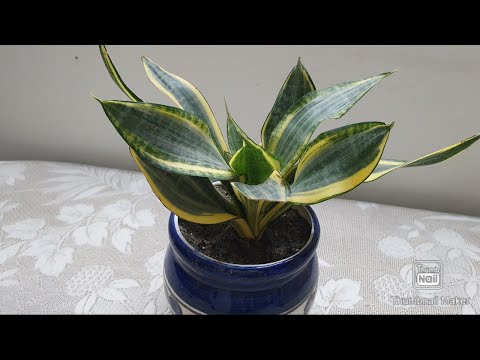Why Have a Sansevierias?
Among the advantages of growing sansevierias indoors is the ease with which they grow in poor conditions. They require little maintenance and are attractive plants that include the hues of green and yellow.
About 70 species of Sansevieria are flowering plants belonging to the genus Sansevieria and the Asparagaceae family. Sansevierias are commonly called snake plants because of their long leaves and tapered ends.
Sansevieria species also have other common names depending on their diversity. A Sansevieria called mother-in-law’s tongue, for instance, is known for its sharp, long leaves. This variety is also known as ‘viper’s bowstring hemp’ because its fibers are strong enough to make bowstrings.
One of the main benefits of having a snake plant (sansevieria) indoors is that it can filter certain toxins from the air. It efficiently reduces toxins like Trichloroethylene, Benzene, and Formaldehyde.
There have been many studies conducted by NASA that demonstrate the positive effects of this plant. In the following article, you will be introduced to many kinds of vegetations in the Sansevieria genus.
The Twisted Sister Snake Plant is a variety of the species Sansevieria trifasciata. It is often referred to as Dracaena trifasciata. Here, we will discuss this species’ characteristics.
Twisted Sister Snake Plant
Scientific Name: Sansevieria trifasciata ‘Twisted Sister’ Synonyms: Sansevieria ‘Twisted Sister’, Sansevieria ‘Gold Twist’, Sansevieria trifasciata var. laurentii ‘Twisted Sister’, Sansevieria trifasciata ‘Futura Twisted Sister’.
USDA hardiness zones 10b to 11b: from 35 °F (+1.7 °C) to 50 °F (+10 °C).
The Twisted Sister Snake Plant is one of the earliest indoor plants. It can grow to about 15 inches (39cm) tall, and its leaves have variegated golds and greens as they twist as they emerge from the base, almost like a bird’s nest.
The Twisted Sister snake plant has curling leaves giving it an unusual shape. It has striking silvery-green markings in the center and comes in various golden yellow and lime green colors. This plant will definitely add some color to any room.
How to Grow and Maintain
LIGHT It tolerates low light, but bright light brings out the colors of the leaves better. Good locations include spots near north-facing windows or in front of bright, sunny windows covered by sheer curtains.
Keep Sansevieria in moderate light or in filtered light. Make sure they are facing a north-facing window or in front of a bright, sunny window covered with sheer curtains. However, intense light may cause the edges of the leaves to turn yellow. The plant can tolerate low light, but bright light brings out the colors of the leaves.
SOIL Sandy soil with peaty compost is the best for it, because it thrives well in well-drained soil.
WATER You should water your plant regularly during the growing season and maintain an evenly moist soil. During the winter months, water at a lower rate.
Let the soil dry completely before watering and then water it deeply until water drips through the drainage hole. Allow the saucer to drain and then discard the remaining water. Throughout the winter, water sparingly and do not let the pot stand in water. Since Sansevierias store water in their leaves, excessively wet soil leads to death.
TEMPERATURE In response to fluctuating temperatures, it is adaptable to temperatures between 65 degree Fahrenheit and 75 degree Fahrenheit / 18 and 24 degrees Celsius. It will not endure temperatures below 55 degree Fahrenheit / 13 degrees Celsius.
FERTILIZE You should fertilize monthly in those active growth periods of spring and summer with a liquid or water-soluble fertilizer. If possible, do not fertilize during the winter months.
Use a general-purpose houseplant fertilizer twice a month through the summer, diluted one-half the strength prescribed on the container. Neither too much nitrate nor too much phosphorous will have any effect on Sansevieria.
PROPAGATION You can propagate it by dividing clusters of leaves. Separate the leaves from the rootstock with a sharp blade or knife when the leaves are six inches long. A majority of clusters will have roots and can be planted directly into a potting mixture. Leaf cuttings can also be propagated in the same manner.
During the spring season, re-pot the plant only when it becomes crowded and needs dividing.
Look out for bugs, spiders, and mealybugs. It does not have serious pest or disease problems.


